Volatilität, Wachstum und Finanzkrisen
Diese Forschungsgruppe analysiert die Entstehung von Instabilitäten im Finanzsystem und die realökonomischen Konsequenzen von Finanzkrisen. Dabei werden kausale Reaktionen gesamtwirtschaftlicher Größen auf makroökonomische Schocks identifiziert. Frühwarnmodelle beschreiben das zyklische Auftreten von Vulnerabilitäten im Finanzsystem.
IWH-Datenprojekt: Financial Stability Indicators in Europe
Forschungscluster
Finanzresilienz und RegulierungIhr Kontakt

- Abteilung Makroökonomik
PROJEKTE
01.2022 ‐ 12.2023
Sovereign Risk Shocks
Deutsche Bundesbank
05.2017 ‐ 09.2019
Frühwarnmodelle für systemische Bankenkrisen: Der Effekt von Modell- und Schätzunsicherheit
Deutsche Forschungsgemeinschaft (DFG)
01.2018 ‐ 12.2018
International Monetary Policy Transmission
Deutsche Bundesbank
Referierte Publikationen

Extreme Risks in Financial Markets and Monetary Policies of the Euro-candidates
in: Comparative Economic Studies, Nr. 4, 2011
Abstract
This study investigates extreme tail risks in financial markets of the euro-candidate countries and their implications for monetary policies. Our empirical tests show the prevalence of extreme risks in the conditional volatility series of selected financial variables, that is, interbank rates, equity market indexes and exchange rates. We argue that excessive instability of key target and instrument variables should be mitigated by monetary policies. Central banks in these countries will be well-advised to use both standard and unorthodox (discretionary) tools of monetary policy while steering their economies out of the financial crisis and through the euro-convergence process.

Central and Eastern European Countries in the Global Financial Crisis: A Typical Twin Crisis?
in: Post-Communist Economies, Nr. 4, 2011
Abstract
This paper shows that during the Great Recession, banking and currency crises occurred simultaneously in Central and Eastern Europe. Events, however, differed widely from what happened during the Asian crisis that usually serves as the model case for the concept of twin crises. We look at three elements that help explaining the nature of events in Central and Eastern Europe: the problem of currency mismatches, the relation between currency and banking crises, and the importance of multinational banks for financial stability. It is shown that theoretical considerations concerning internal capital markets of multinational banks help understand what happened on capital markets and in the financial sector of the region. We discuss opposing effects of multinational banking on financial stability and find that institutional differences are the key to understand differing effects of the global financial crisis. In particular, we argue that it matters if international activities are organized by subsidiaries or by cross-border financial services, how large the share of foreign currency-denominated credit is and whether the exchange rate is fixed or flexible. Based on these three criteria we give an explanation why the pattern of the crisis in the Baltic States differed markedly from that in Poland and the Czech Republic, the two largest countries of the region.
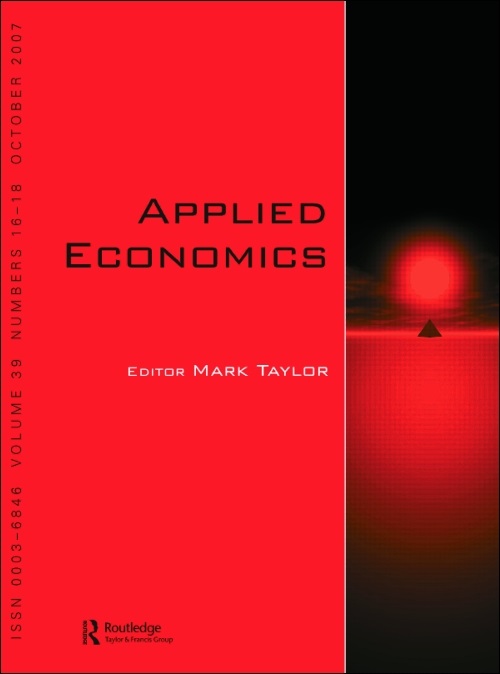
Inflation and Relative Price Variability in the Euro Area: Evidence from a Panel Threshold Model
in: Applied Economics, Nr. 4, 2012
Abstract
The impact of inflation on Relative Price Variability (RPV) generates an important channel for real effects of inflation. This article provides first evidence on the empirical relation between inflation and RPV in the euro area. Stirred by the widespread use of inflation caps or target bands in monetary policy practice, we are particularly interested in threshold effects of inflation. In line with the predictions of monetary search models, our results indicate that expected inflation significantly increases RPV only if inflation is either very low (below 0.95% per annum (p.a.)) or very high (above 4.96% p.a.).

Interest Rate Convergence in the Euro-Candidate Countries: Volatility Dynamics of Sovereign Bond Yields
in: Emerging Markets Finance and Trade, 2010
Abstract
We argue that a “static“ specification of the Maastricht criterion for long-term bond yields is not conducive to assessing stability of financial systems in euro-candidate countries. Instead, we advocate a dynamic approach to assessing interest rate convergence to a common currency that is based on the analysis of financial system stability. Accordingly, we empirically test volatility dynamics of the ten-year sovereign bond yields of the 2004 EU accession countries in relation to the eurozone yields during the January 2, 2001-January 22, 2009, sample period. Our results show a varied degree of the relationship between domestic and eurozone sovereign bond yields, the most pronounced for the Czech Republic, Slovenia, and Poland, and weaker for Hungary and Slovakia. We find some divergence of relative bond yields since the EU accession.

A Cost Efficient International Lender of Last Resort
in: International Research Journal of Finance and Economics, 2010
Abstract
The current reform of the International Monetary Fund’s (IMF) lending instruments has transformed the Fund towards an international lender of last resort (ILOLR). Current research discusses various general frameworks for installing an ILOLR. However, it remains unclear how the ILOLR should actually operate. This paper discusses six different options for the construction of an ILOLR that supports central banks during currency crises. The paper concludes that the most cost efficient version of the ILOLR would be direct intervention by the IMF using IMF resources, with the option of using additional reserves from central banks. The paper considers measures of cost efficiency, such as cost of borrowing, intervention, and sterilization and moral hazard problems.
Arbeitspapiere
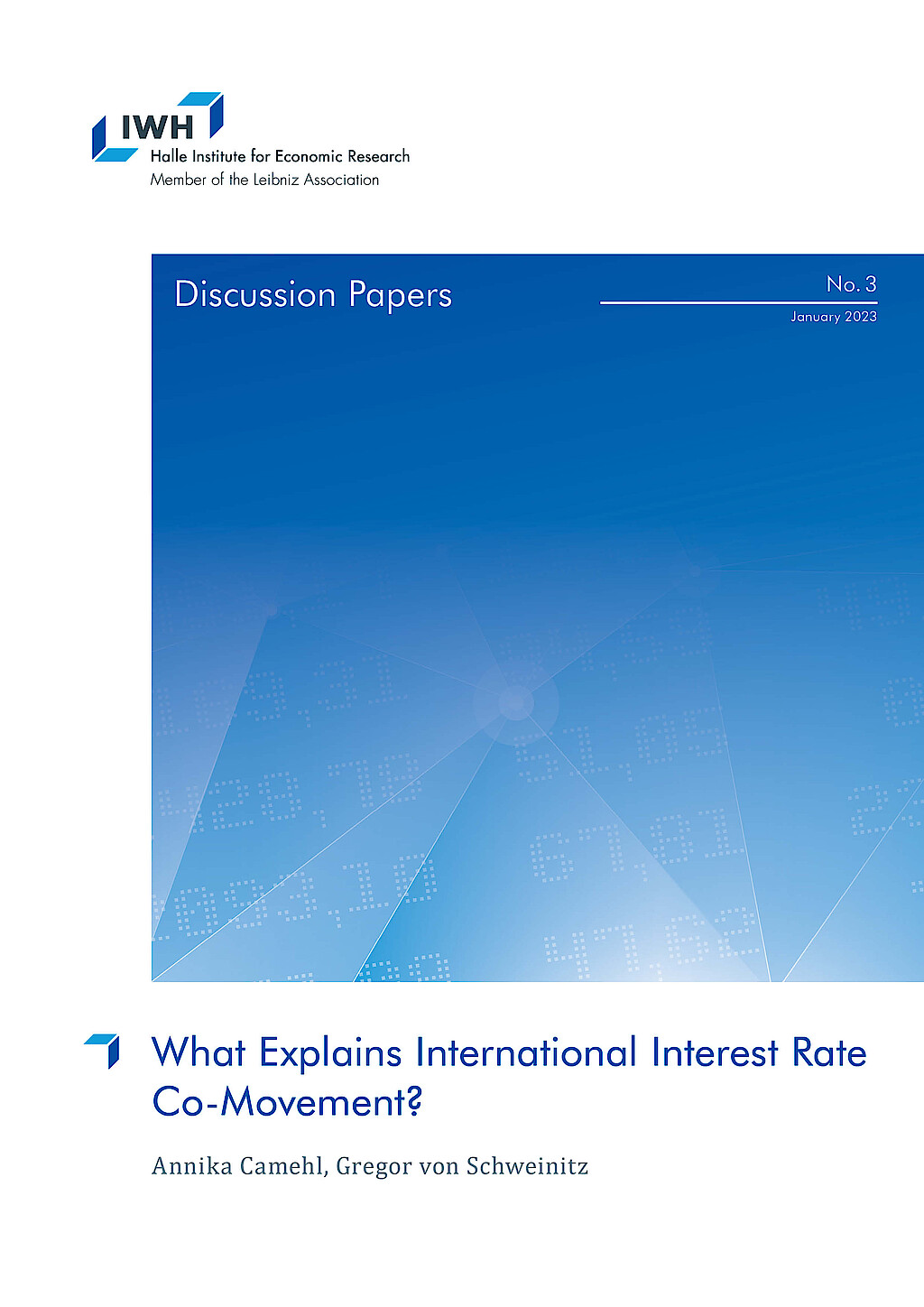
What Explains International Interest Rate Co-Movement?
in: IWH Discussion Papers, Nr. 3, 2023
Abstract
We show that global supply and demand shocks are important drivers of interest rate co-movement across seven advanced economies. Beyond that, local structural shocks transmit internationally via aggregate demand channels, and central banks react predominantly to domestic macroeconomic developments: unexpected monetary policy tightening decreases most foreign interest rates, while expansionary local supply and demand shocks increase them. To disentangle determinants of international interest rate co-movement, we use a Bayesian structural panel vector autoregressive model accounting for latent global supply and demand shocks. We identify country-specific structural shocks via informative prior distributions based on a standard theoretical multi-country open economy model.
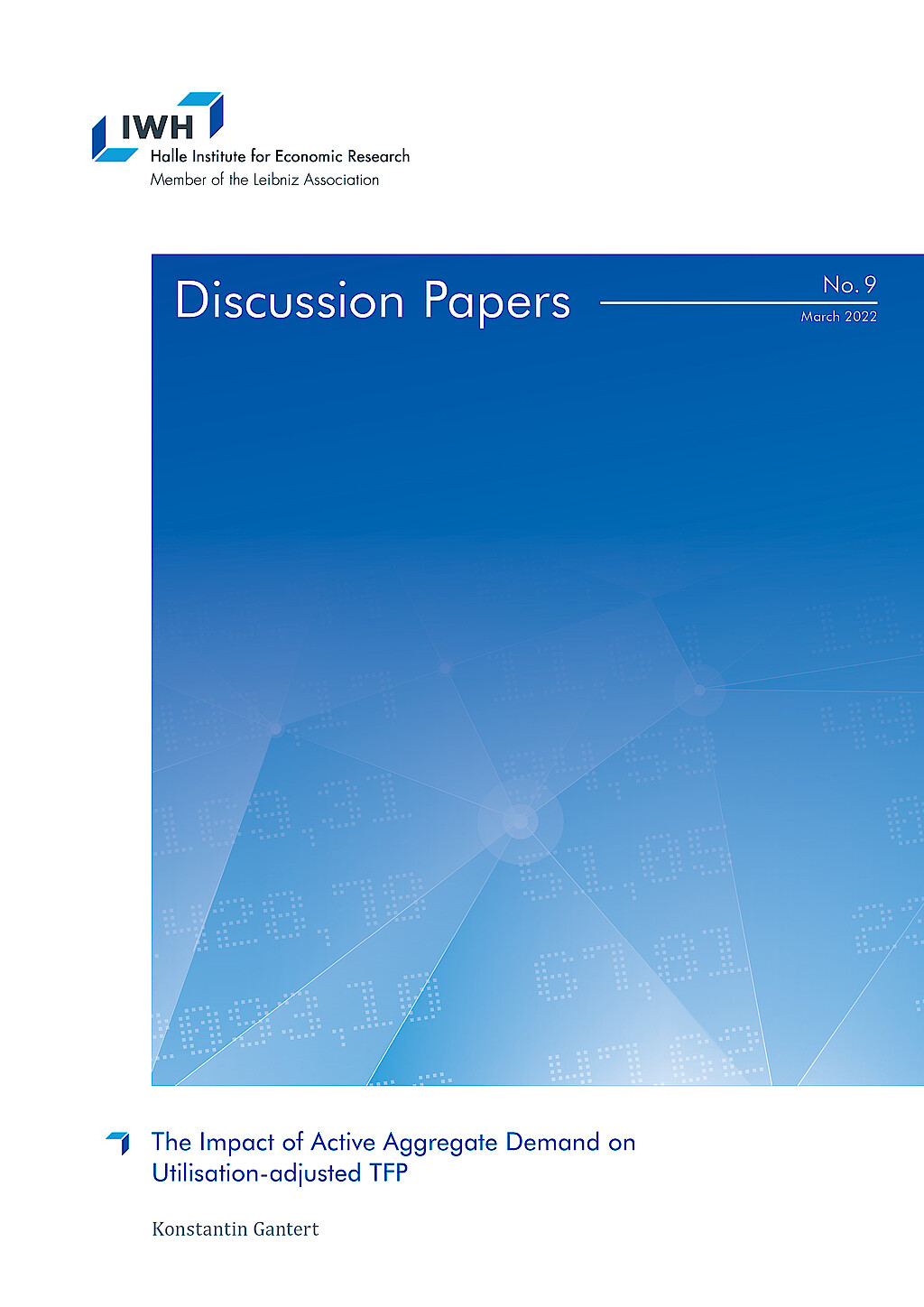
The Impact of Active Aggregate Demand on Utilisation-adjusted TFP
in: IWH Discussion Papers, Nr. 9, 2022
Abstract
Non-clearing goods markets are an important driver of capacity utilisation and total factor productivity (TFP). The trade-off between goods prices and household search effort is central to goods market matching and therefore drives TFP over the business cycle. In this paper, I develop a New-Keynesian DSGE model with capital utilisation, worker effort, and expand it with<i> goods market search-and-matching (SaM)</i> to model non-clearing goods markets. I conduct a horse-race between the different capacity utilisation channels using Bayesian estimation and capacity utilisation survey data. Models that include goods market SaM improve the data fit, while the capital utilisation and worker effort channels are rendered less important compared to the literature. It follows that TFP fluctuations increase for demand and goods market mismatch shocks, while they decrease for technology shocks. This pattern increases as goods market frictions increase and as prices become stickier. The paper shows the importance of non-clearing goods markets in explaining the difference between technology and TFP over the business cycle.
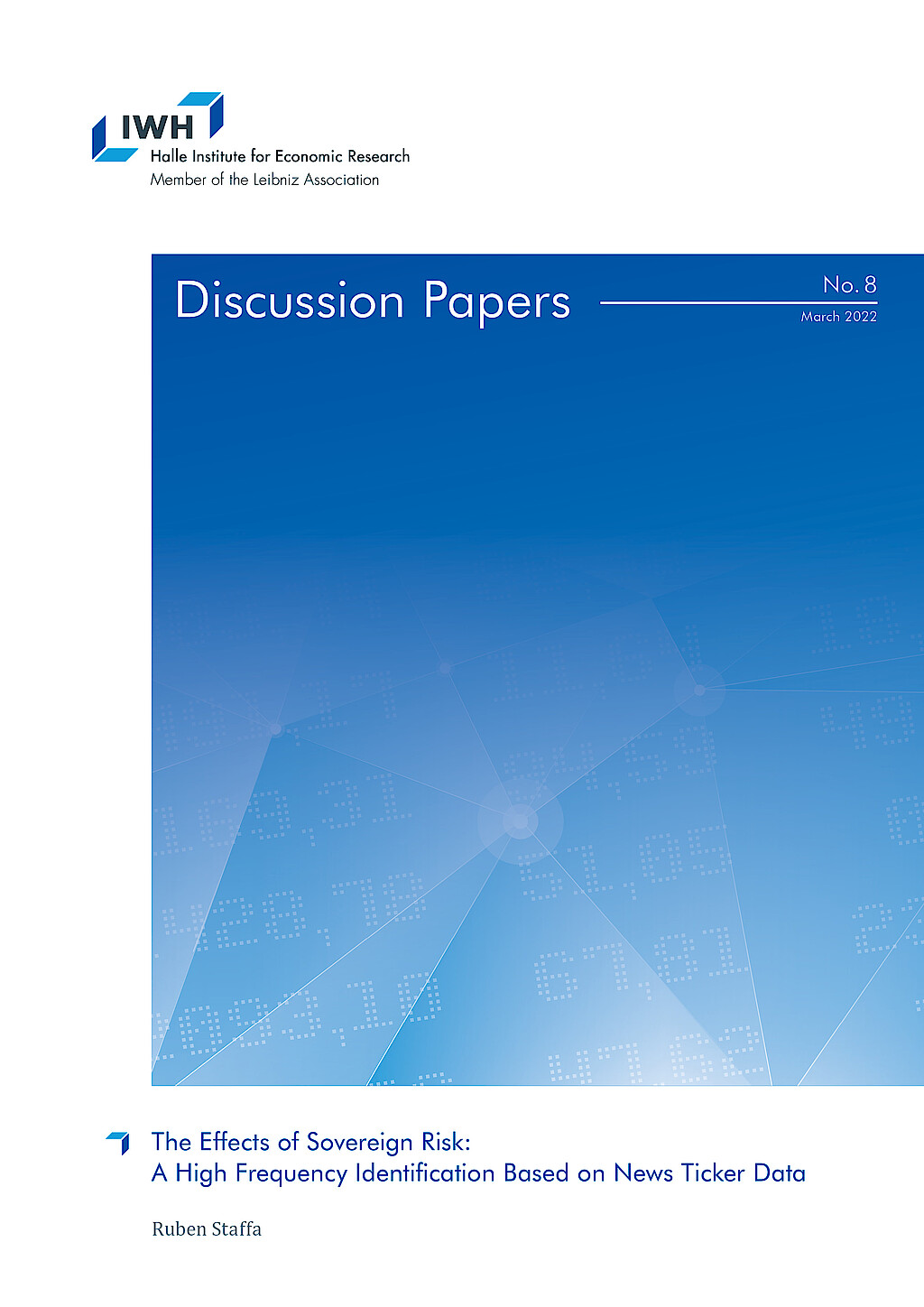
The Effects of Sovereign Risk: A High Frequency Identification Based on News Ticker Data
in: IWH Discussion Papers, Nr. 8, 2022
Abstract
This paper uses novel news ticker data to evaluate the effect of sovereign risk on economic and financial outcomes. The use of intraday news enables me to derive policy events and respective timestamps that potentially alter investors’ beliefs about a sovereign’s willingness to service its debt and thereby sovereign risk. Following the high frequency identification literature, in the tradition of Kuttner (2001) and Guerkaynak et al. (2005), associated variation in sovereign risk is then obtained by capturing bond price movements within narrowly defined time windows around the event time. I conduct the outlined identification for Italy since its large bond market and its frequent coverage in the news render it a suitable candidate country. Using the identified shocks in an instrumental variable local projection setting yields a strong instrument and robust results in line with theoretical predictions. I document a dampening effect of sovereign risk on output. Also, borrowing costs for the private sector increase and inflation rises in response to higher sovereign risk.
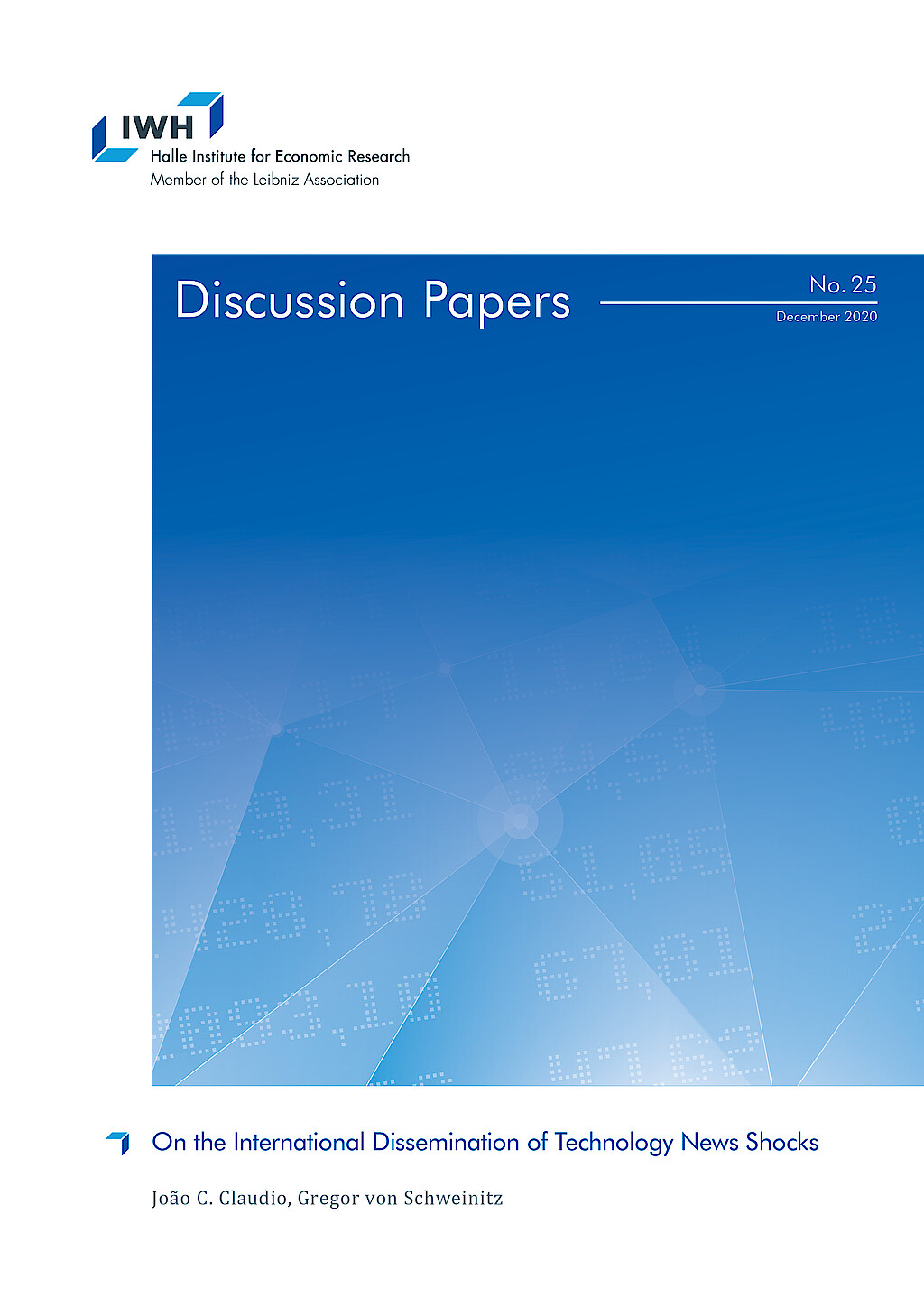
On the International Dissemination of Technology News Shocks
in: IWH Discussion Papers, Nr. 25, 2020
Abstract
This paper investigates the propagation of technology news shocks within and across industrialised economies. We construct quarterly utilisation-adjusted total factor productivity (TFP) for thirteen OECD countries. Based on country-specific structural vector autoregressions (VARs), we document that (i) the identified technology news shocks induce a quite homogeneous response pattern of key macroeconomic variables in each country; and (ii) the identified technology news shock processes display a significant degree of correlation across several countries. Contrary to conventional wisdom, we find that the US are only one of many different sources of technological innovations diffusing across advanced economies. Technology news propagate through the endogenous reaction of monetary policy and via trade-related variables. That is, our results imply that financial markets and trade are key channels for the dissemination of technology.
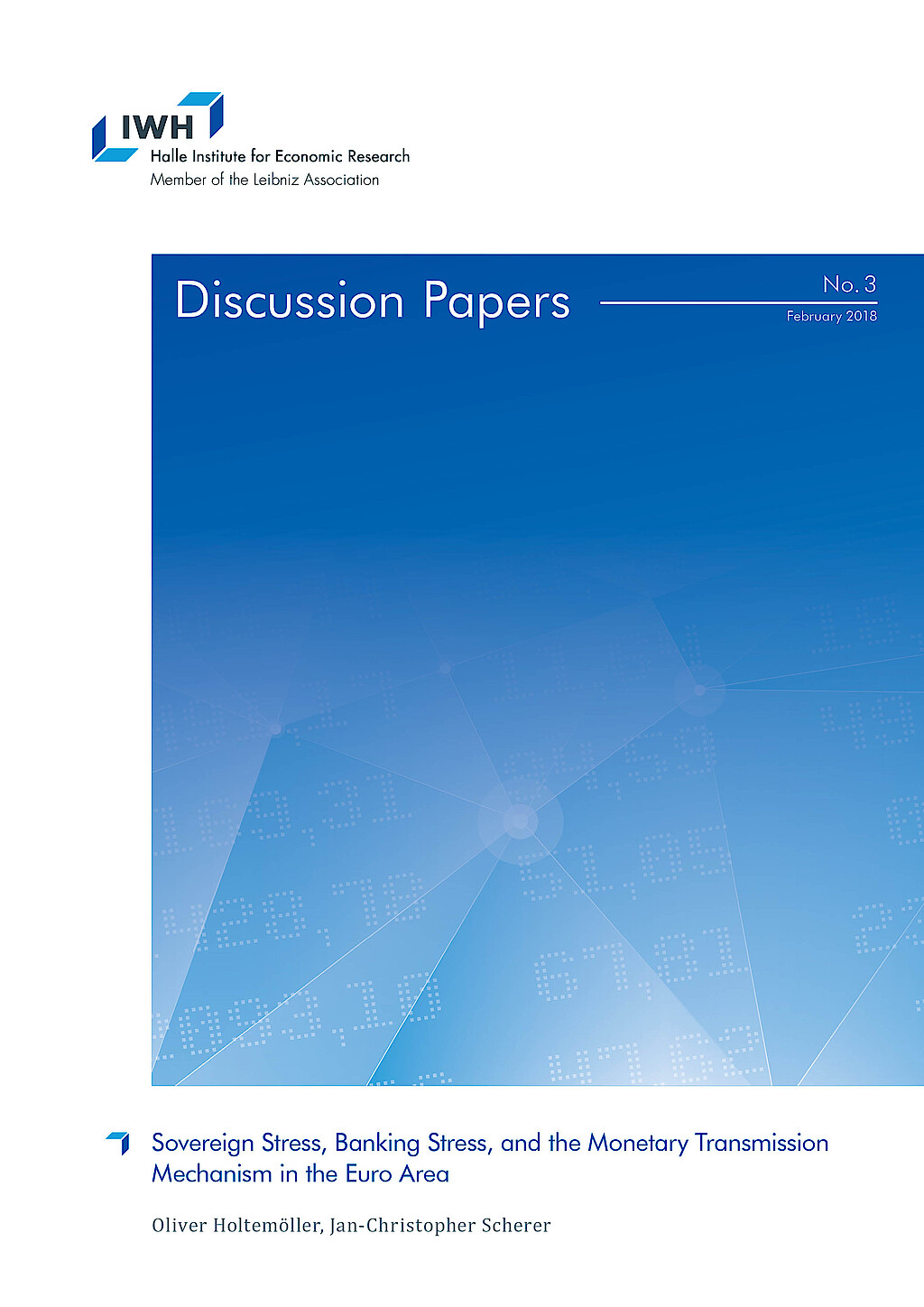
Sovereign Stress, Banking Stress, and the Monetary Transmission Mechanism in the Euro Area
in: IWH Discussion Papers, Nr. 3, 2018
Abstract
In this paper, we investigate to what extent sovereign stress and banking stress have contributed to the increase in the level and in the heterogeneity of nonfinancial firms’ refinancing costs in the Euro area during the European debt crisis and how they did affect the monetary transmission mechanism. We identify the increasing effect of government bond yield spreads (sovereign stress) and the share of non-performing loans (banking stress) on firms’ financing costs using an instrumental-variable approach. Moreover, we estimate both sources of stress to have significantly impaired the monetary transmission mechanism during the European debt crisis.














